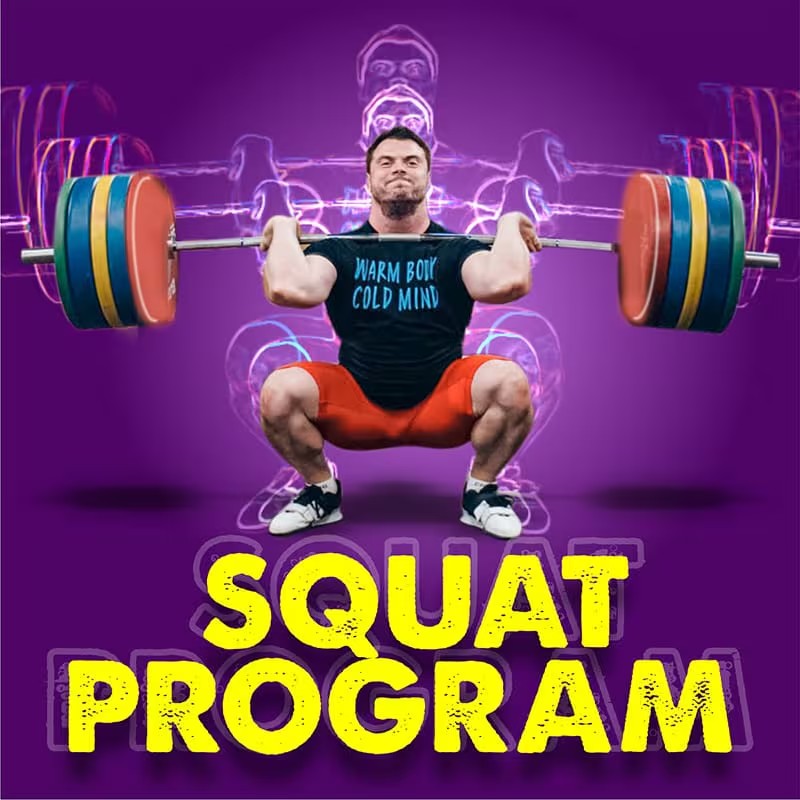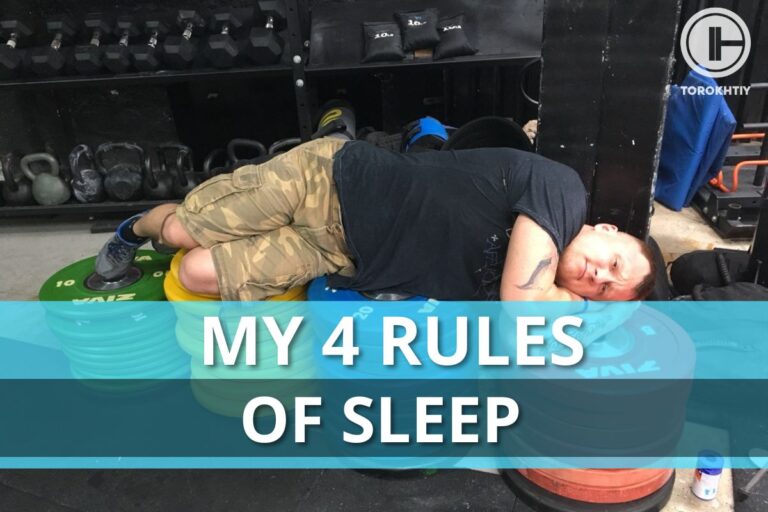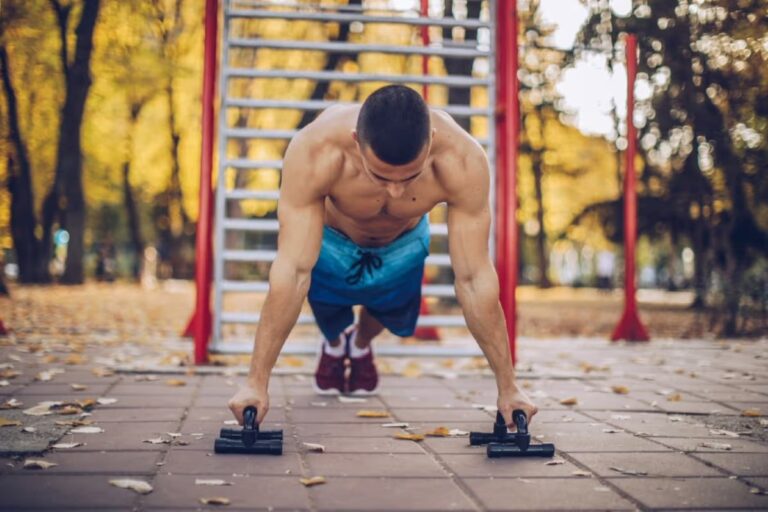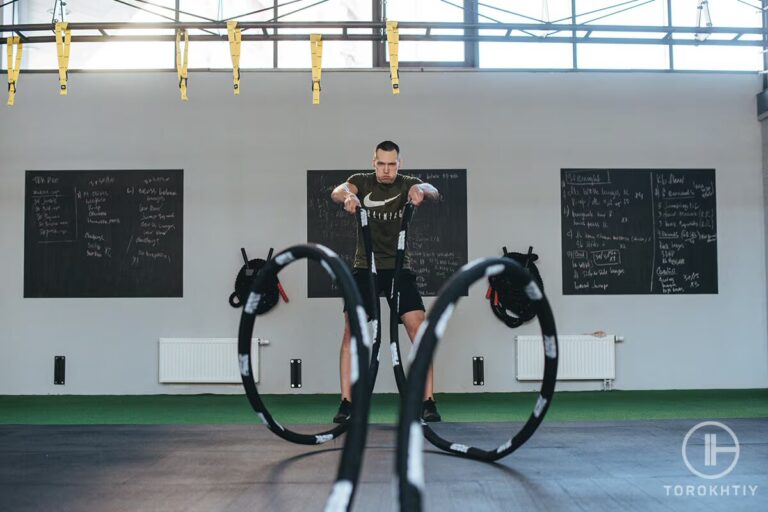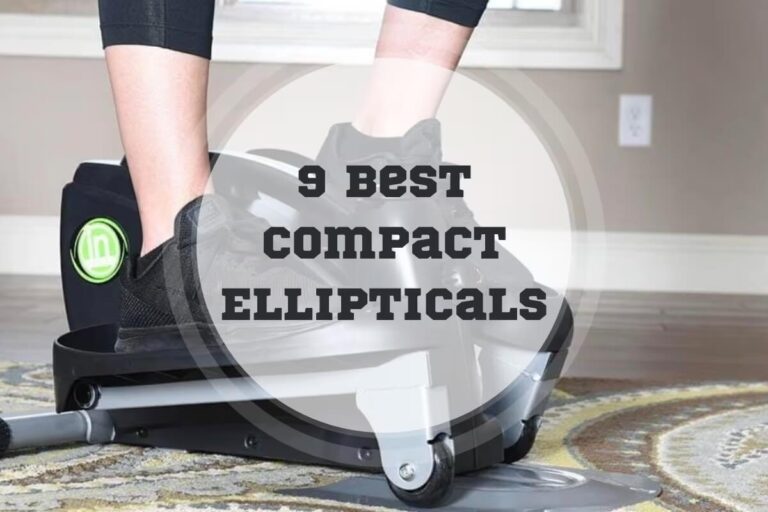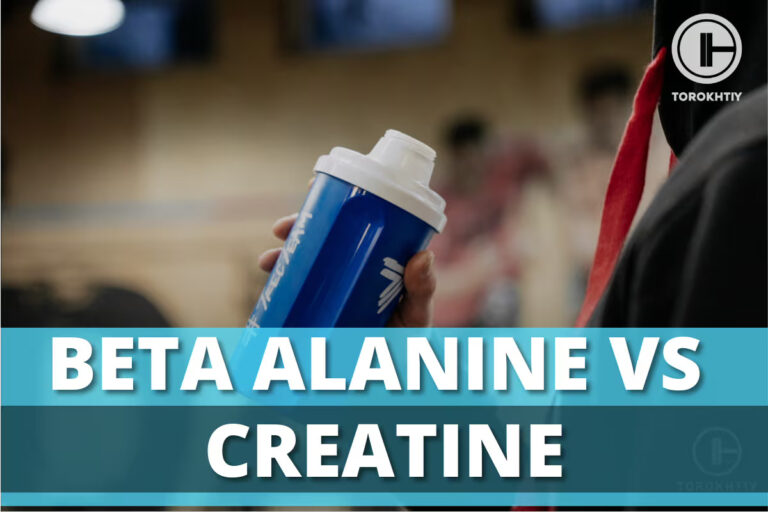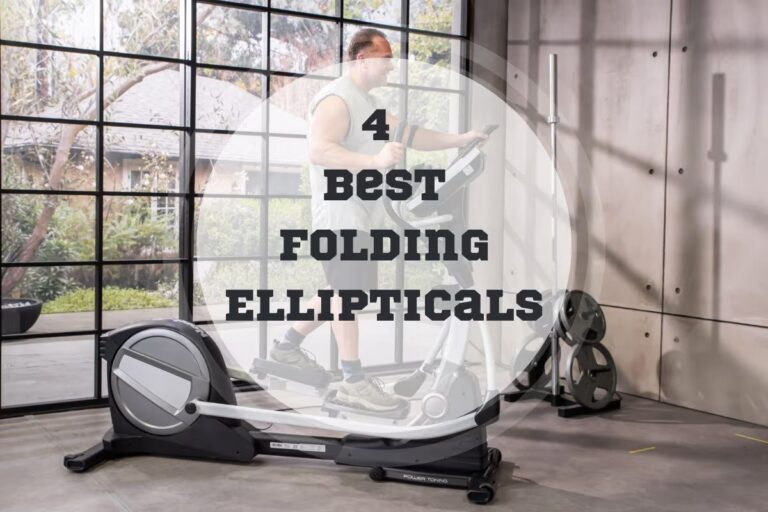Detailed Squat Program For Strength & Mass
Reviewed by: Oleksiy Torokhtiy (21 years of Oly Lifting experience)
What’s Squat? Back squats are a fundamental and essential exercise for athletes in practically all sports, not just in powerlifting and Olympic weightlifting of any level. Everyone does squats, however the loads used vary depending on the athletes’ skill level, the “concept” of the training regimen, the preparatory period, and the loads themselves.
The development of power and strength in almost all sports is associated with knee and hip extension, which is why the squat program is an integral part of any strength training. Depending on the stage and goals of training, the coach can set different squat purposes for the athlete, from the maximum weight to the maximum number of reps with weight equal to his body weight.
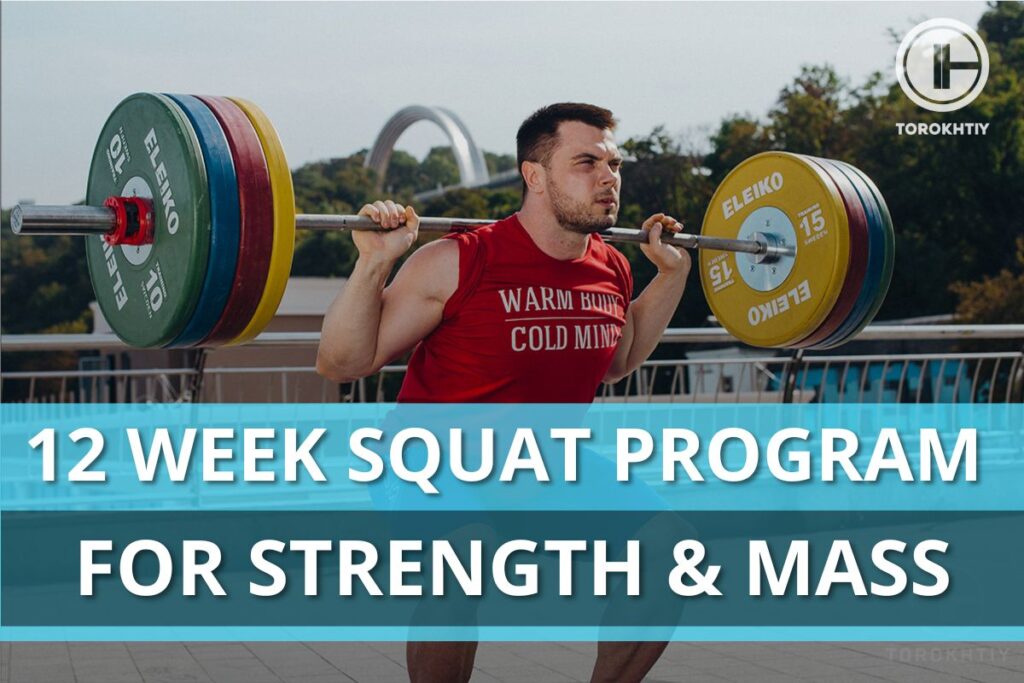
Back squats exercise target the posterior chain or the back of body – including the hamstrings, glutes and lower back. The core muscles and quads are also engaged.
Squat routine is a crucial component of any strength training programme because they help improve power and strength, which are related to knee and hip extension in practically all sports.
Coaches and athletes can establish several objectives for the athlete, ranging from the maximum weight to the maximum number of reps with weight equal to his body weight, depending on the goals of training. Back squat workout plan target the glutes, hamstrings, core and quads as well as the posterior chain of your body.
Squat Variations
1. Bench Back Squat
This drill is wonderful for developing leg strength since it lets you use a lot of weight. To make the present workout safe and successful, it is crucial to keep in mind the technical details:
- Always face the rack;
- Before working with heavy bar, make sure the racks and bench are easily accessible;
- The bench height should be at the knee joint level;
- The optimal angle of squatting in this drill is the thigh parallel to the floor;
- A tight back, the shoulder blades should be brought together;
- The bar should be well placed on the trapezium and not allow it to slip down or on the neck;
- Look forward – this will help you to keep correct form;
- Always go slowly until your glutes meet the bench, then quickly extend your body upward while pushing the ground via your heels.
2. Paused Back Squat
Pause squats are a multi-purpose exercise. Due to the lack of a stretch-contraction reflex in the movement – which we employ in conventional squats to overcome the “dead point” — this exercise first and foremost completely builds maximal strength.
Additionally, it strengthens the core, promotes mobility, which increases control in the bottom region of the squat, and enhances squatting mechanics.
Although I frequently see professional athletes pausing at the bottom point of 5-6 seconds, I advise a 3 second pause period. Physiologically, the quadriceps may be stretched to their maximum and made to contract in about three seconds.
For more core strength training, longer pauses can be used, but this won’t slow down the rate at which your muscles get stronger. Pause back squats are best planned during the basis period; I do not advise exceeding 5 repetitions. Usually, sets of two to three are employed.
3. Narrow Stance Squat
The feet used for these squats should be closer together than shoulder width. The knees and feet are pointed on the same plane. The quadriceps, glutes, and adductors are the main muscles this exercise targets.
The hips are less widely spaced during narrow stance squats because they are executed with a lesser amplitude, and the main mobility and load demands are instead placed on the ankle joint. Such squats ought to be executed as deeply as feasible while maintaining maximal comfort and the neutral posture of the spine.
One of the key advantages of narrow squats is that most athletes see an improvement in their range of motion after three to four weeks. The optimal time to schedule a narrow stance squat training program is during the basic and transition phase.
I advise against employing excessive weight; it is more useful to focus on a comfortable, regulated load and movement quality.
4. Wide Stance Squat
This drill is a fantastic training technique for strengthening the posterior chain and using a variety of muscles that aren’t used as much in more narrow positions. The gluteal and femoral muscles are effectively activated when the stance is broad (about 140% of the shoulder`s width).
By the way, these squats are a regular in the workout routines of bodybuilders and powerlifters as a part of squat program for mass. Additionally, this squat regimen can be used as an alternative by athletes whose knee ligaments get irritated as a result of big loads.
Of course, the ideal situation would be to completely abstain from carrying any loads, but while training for significant events, it is not always feasible due to the requirement to maintain strong legs. Your shins may be kept more upright with a broader stance, which relieves pressure on your knees.
5. Three Position Squat
The advantages of the three exercises – narrow, medium, and wide squats – are combined in this strength complex. The three-position squat will make it necessary for the athlete to “breathe” heavily and focus intently in order to avoid getting anything messed up or mishandling their technique.
You will be impressed by how challenging it is and what feelings you will have in muscles the following day, even if you use a weight that is completely feasible and that you can confidently squat 10 reps in a regular back squat while only performing 2 reps of each type of squat in a row (for a total of 6). Another effective tip is to alternate the type of stance each set.
The best time to schedule this squat workout routine is during the basic phase as well as when you are adding bulk, such as when switching to a new weight class. I advise against using too much weight; instead, attempt to set 50–60% of your best BS and perform 3+3+3.
6. Goblet Squat
A great squat option for novices who wish to perfect their movement mechanics is the goblet squat. The goblet squat is an excellent exercise to perform during warm-ups and while instructing torso alignment, in addition to being a great introduction to back squats.
7. The Zercher Squat
It is a well-liked exercise among Strongman competitors, but more lately, powerlifters and bodybuilders have turned to it as well. The Zercher squat belongs to the class of exercises known as “strange lifts.”
The lifter is squatting while simultaneously holding the weight in both of their arms. A “front-loaded” exercise, the Zercher squat places the bar in front of the body.
As the lifter attempts to keep the body from being “dragged forward,” the upper back, quadriceps, and core muscles are given more attention in these types of workouts. The shoulders & biceps are particularly stressed during the Zercher squat since the lifter is basically “carrying” the weight in their arms the entire time.
Benefits of Squatting
✅ Squats Improve Jump and Sprint
Squats help you jump higher and further. How? Since stronger and better-conditioned muscles produce more power, developing all of the lower extremities will increase your capacity to generate that power.
✅ Stronger Core
Here, the term “core” refers to the entire torso rather than simply the abs. The body has to work hard to be steady when moving across several planes of motion while holding weight. As a result, the entire core – which consists of the back muscles, stabilizers, obliques, and abdominal muscles – becomes stronger.
✅ Confidence Growth
Although this advantage is largely anecdotal, there is merit to the confidence that hard squats may foster. Squat strength program is incredibly hard on the body and hazardous by nature. It requires courage and self-assurance to hold hundreds of kilos on your shoulders and execute a deep squat. More weight on the barbell will give you more confidence.
✅ Being Able to Generate More Power
Squats improve our capacity for vertical jumps, but they also improve our capacity for explosive power production during exercises like the Olympic snatch.
When we sprint, knee and hip joints flexion & extension all play important roles in absorbing force during jump landings, stopping during a sprint and lifting weight. By disregarding your legs, which are the greatest section of your body, you won’t acquire power.
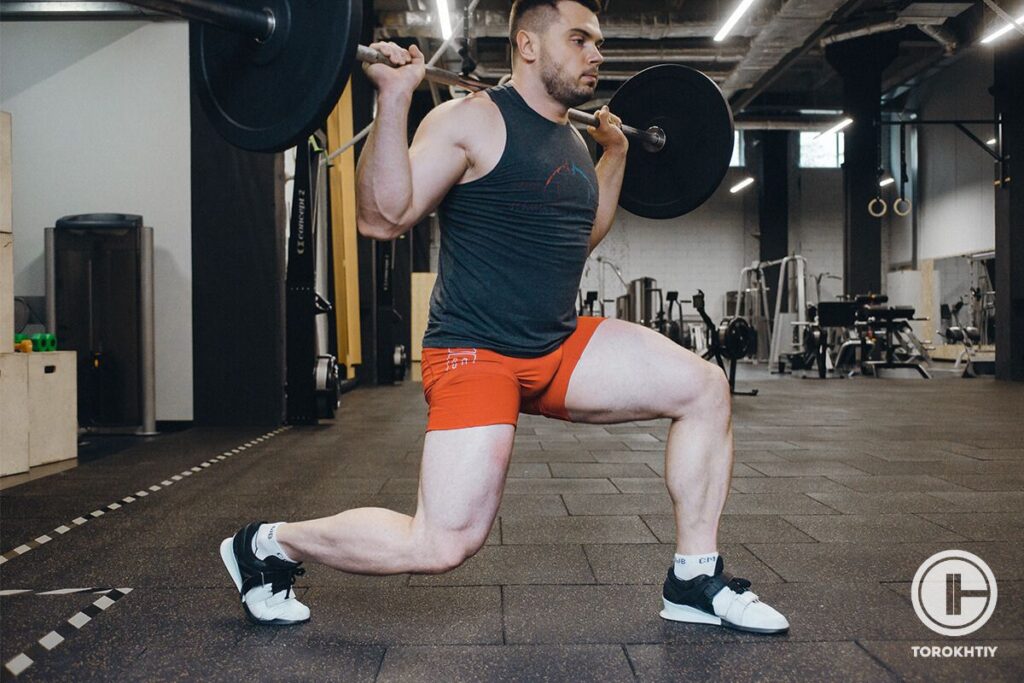
✅ Improved Flexibility & Mobility
Mobility and flexibility isn’t just about general ROM, but how powerful and strong you are in certain ranges of motion. Your capacity to, well, squat, is enhanced by squats.
Squat progression program develop joints to move across a variety of planes of motion when you practice them often. Additionally, gradually increasing load to your squats will increase your strength at the top & bottom of the movement. The power you get from squatting goes over into daily life.
✅ Greater Fat Burning
More muscle means more calories burned throughout the day. You’ll burn more calories during a back squat than, say, leg extensions since the squat simultaneously strengthens many significant muscle groups and demands a lot of energy to complete.
✅ Assist in Avoiding Injuries
Most, but not all, injuries sustained when moving can be attributed to weaknesses and imbalances. The squat programs for strength enhances hip & knee stability, and can address many problems brought on by imbalances.
✅ Develop Stronger Joints
If you don’t use it, you lose it when it concerns your joints’ ability to function. However, a consistent program to increase squat helps to strengthen the tendons, ligaments, bones, and muscles that support our squatting joints.
✅ Increases Hormone Production Naturally
Squat routine for strength have been demonstrated to enhance the synthesis of our natural hormones, particularly growth hormone and testosterone. Most likely, it is a response to the stress of really difficult movements and pressures, such as free weights.
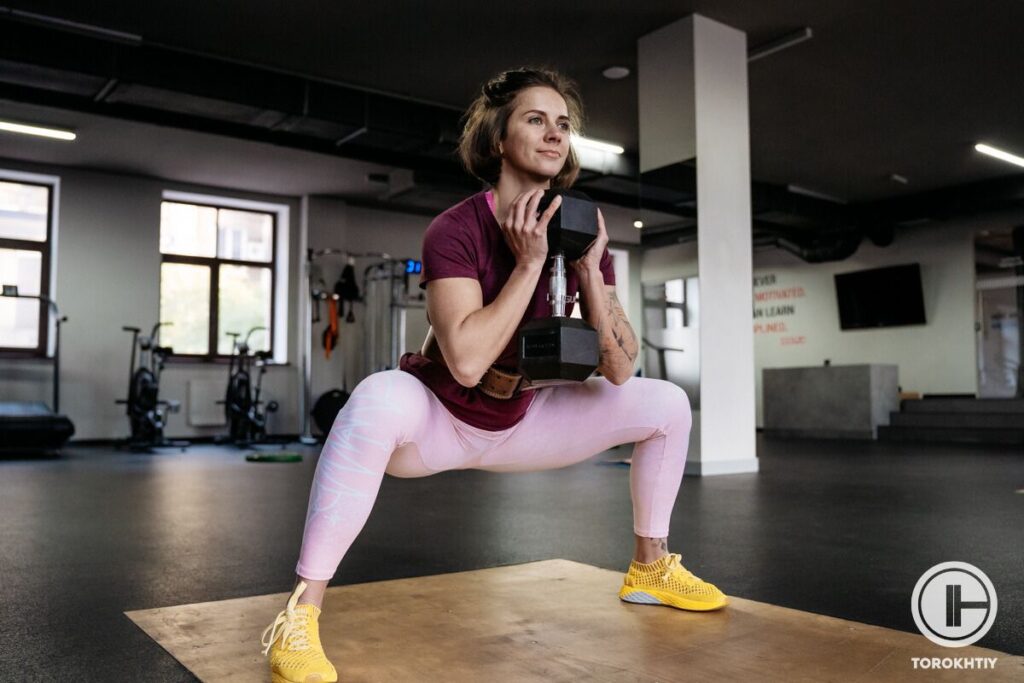
✅ Better Posture
Your posture improves when your lower body and core strength both increase. Both the front and back muscles have an impact on posture, which results in a healthy physique.
Squats, when done correctly, can protect our hips from harm caused by activities like sitting all day. Squats also strengthen our torso, preventing conditions like internal shoulder rotation and hunchback. Not just squatting, but also stretching are essential for better posture.
🔻12 Week Squat Program by Oleksiy Torokhtiy
Do you want to double your squat strength? In just 12 weeks, you’ll be able to boost your squat results.
This program transforms any ordinary squat into a powerful athletic movement.
What’s included:
- 12 weeks of squat programming;
- Effective combination of sets, reps, and weights;
- Fully designed and coached by Oleksiy Torokhtiy;
- Over 60+ movements, banded work, and weight training;
- Accessory work for core, joint stability and injury prevention;
- Max out on back squat and front squat at the end.
Start now and boost your squat results!
Exercises to Improve Your Squat Results
There are a variety of exercises that may be included in a programme to help you become stronger, but if you want to concentrate on enhancing your squat strength it’s crucial to include some accessory exercises in your training routine.
1. Front Squats
A version of the squat called a front squat places the barbell on your front shoulder area rather than your back. This squat variant emphasizes the quadriceps more because of where the bar is placed, and as a result, it may be a wonderful alternative to the standard back squat to develop leg strength and hypertrophy.
2. Split Squats
Split squats are an excellent exercise for more isolating leg muscles training. This is fantastic for any lifter, but it’s particularly useful if you have a dominant leg. Split squats can be performed with kettlebells or a barbell on the shoulders and also can be performed with the front foot elevated, the back foot elevated or not at all.
By standing more upright, you may target your quadriceps more effectively than your glutes. If you do want to work your glutes as well, though, a bulgarian version split squat will help achieve so.
3. Romanian Deadlifts
Romanian deadlifts (also known as RDL) are a type of deadlift in which you start off standing while holding the barbell, lower the weight while keeping your legs straight, and then immediately stand back up before the bar hits the floor. Although the hamstrings are the main area affected by this exercise, it also benefits your upper and lower back, glutes, and abs.
4. Bent Over Rows
Bent-over row or Lat Pull is a fantastic drill that primarily targets the muscles in your upper back. It will be crucial to develop these muscles so you can generate a solid shelf for the bar to rest on during the squat. Additionally, you’ll be using certain core and lower back muscles, which are excellent for squat training.
5. Weighted Plank
With core engaged and a weight on your back, you execute the weighted plank while standing on toes and forearms. Adding the additional weight can assist raise awareness and better engage the core for people who can already perform a bodyweight plank easily, even though a bodyweight plank can also be an effective workout for the core.
6. Deadbugs
Exercises like deadbugs are excellent for strengthening the core, which will make it easier for you to use the brace when squatting. You must be on your back, all four limbs in the air, with your arms straight and your knees bent, in order to do a deadbug.
The goal of the motion is to stretch the opposing leg & arm, while maintaining an engaged core. Pressing your lower back against the ground is obligatory.
7. Calf Raise
Calf raise is a very effective drill that may be performed in a variety of ways. This involves carrying bar or dumbbells while performing them freestanding, utilizing a sitting calf raise machine, or a standing calf raise machine.
Squat Programming for Beginners vs Intermediate and Advanced Lifters
How can you know whether you’re a beginner, intermediate, or advanced lifter? That is a good topic. The solution may alter the exercises you include in your routine, the training plan you select, the rate at which you should put on weight when bulking, and the rate at which you may add load to the barbell.
The first poor approach relies on how long you’ve been weightlifting. This is how the categorisation looks:
Someone who has only recently begun lifting is considered a beginner.
Someone who has been lifting for between six months and two years is considered an intermediate lifter.
One who has been training for more than 2 years is considered an advanced lifter.
These figures may now change. Sometimes only people who have been training over ten years are given the advanced title. That’s alright. Whatever the statistics, this continues to be a poor approach to categorize someone’s lifting ability. How muscular or powerful you are might also affect how you are classified.
1. Programming for Beginners
Beginners are advised to perform around 4 sets x 6 reps of squats without any specifically recommended weight; instead, they should choose a load that they can manage with proper form.
At this phase of training, the goal is technical mastery rather than weight gain. Up until they are proficient in the squat, bench press, deadlift, and overhead press & squat, a person is regarded as a beginner. Mostly, athletes have a squat schedule 3 times per week.
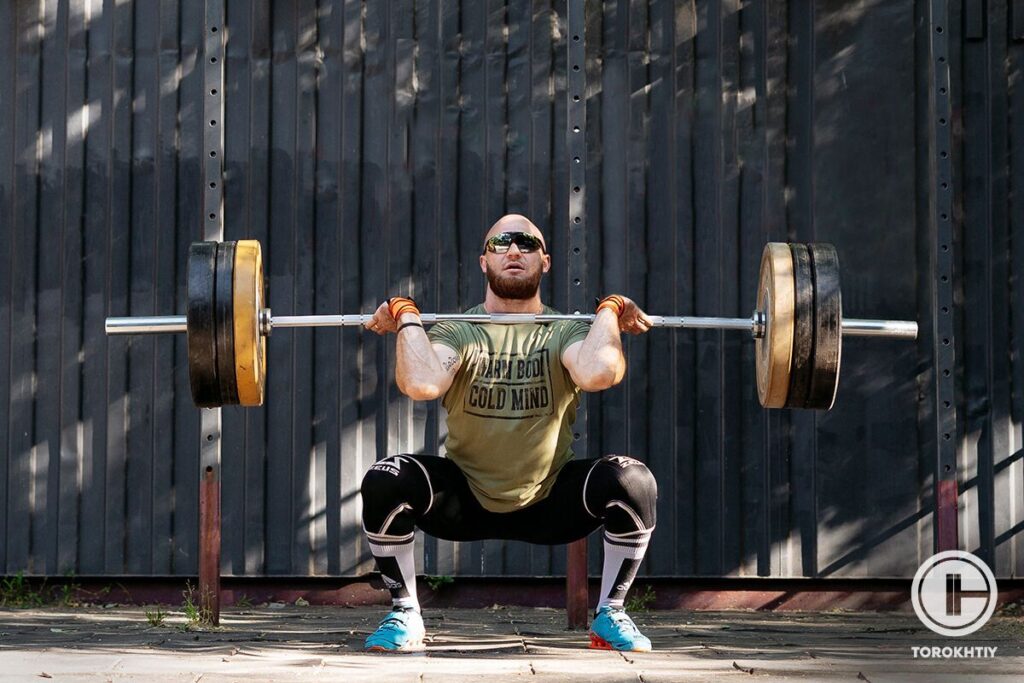
2. Programming for Intermediate
Intermediate lifters are technically skilled and know their 1 RM or near to it. Usually squats training load looks like 70-75% up to 3-4 sets x 8-10 reps. Except for the intensity of the session, there aren’t many differences between the beginner and intermediate programmes here.
For intermediate lifters, the emphasis has shifted from technique training to hypertrophy and base development. Also they can have more exercises. Usually training programs consist of 3-5 sessions per week.
3. Programming for Advanced
At this stage, the advanced athlete is training much harder. The majority of the foundation was developed during what ought to have been an offseason squat cycle.
Because we are getting ready for a peaking block and because you need more time to peak your lifts at an advanced level, training is much heavier than it was for the intermediate for the major movement.
A lift variation comes after the main squat drill. This accessory load is used to strengthen an athlete’s particular area of weakness. On this level athletes can train up to 5-6 times per week.
There are several methods to categorize people as beginner, intermediate or advanced lifters. The most common method of grouping people is according to their overall strength, which includes their capacity for squatting, bench pressing, and deadlifting.
However, it’s typically a better idea to group people according to how well they can execute the movements, such as whether they can squat properly and deeply, bench press to chest area without injuring shoulders, and deadlift with a neutral spine.
People may then choose the lifts and programmes that best suit their skills. When choosing a lift, one’s strength is significantly less important.
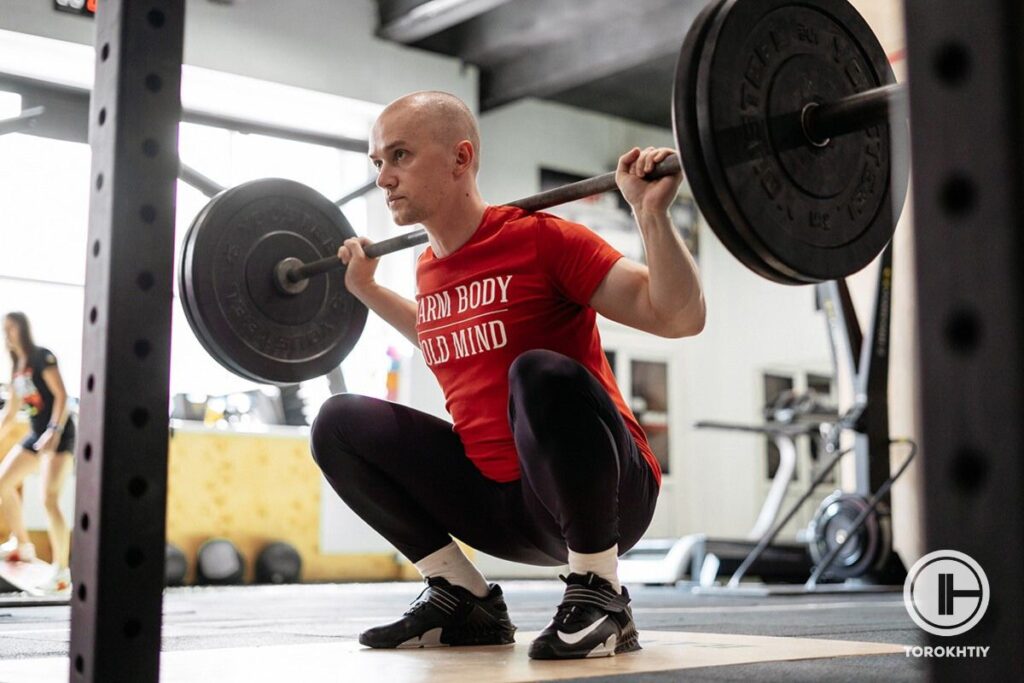
Key Factors In Squat Routine
1. Frequency
Most athletes squat a few times each week. By doing this, you’ll have more chances to enhance your squat technique and prepare various training adaptations, such as strength, hypertrophy, and power, for each exercise. You must be an experienced powerlifter or weightlifter if you squat more than 3 times a week.
2. Intensity
Exercise intensity is a measure of how difficult you believe your physical exertion to be at the time of the exercise to be. Various people may experience different levels of effort when engaging in the same exercise. The range of intensity training can range from 50 up to 90% of 1 RM, depending on the training target (strength, hypertrophy or power).
3. Repetition Range
The ideal rep range for squats, if the hypertrophy is the aim, is 6 to 12. This is because it is simpler to accrue greater total volume, a key factor in driving muscle growth, when we execute higher repetitions.
The ideal rep range for squats is one to five repetitions if building leg power & strength is the aim. To adjust for overall volume, we need additionally take sets and reps into account.
Although this rep range is not written in stone, it is typically advised since it enables us to lift weights that are difficult enough to generate significant quantities of force.
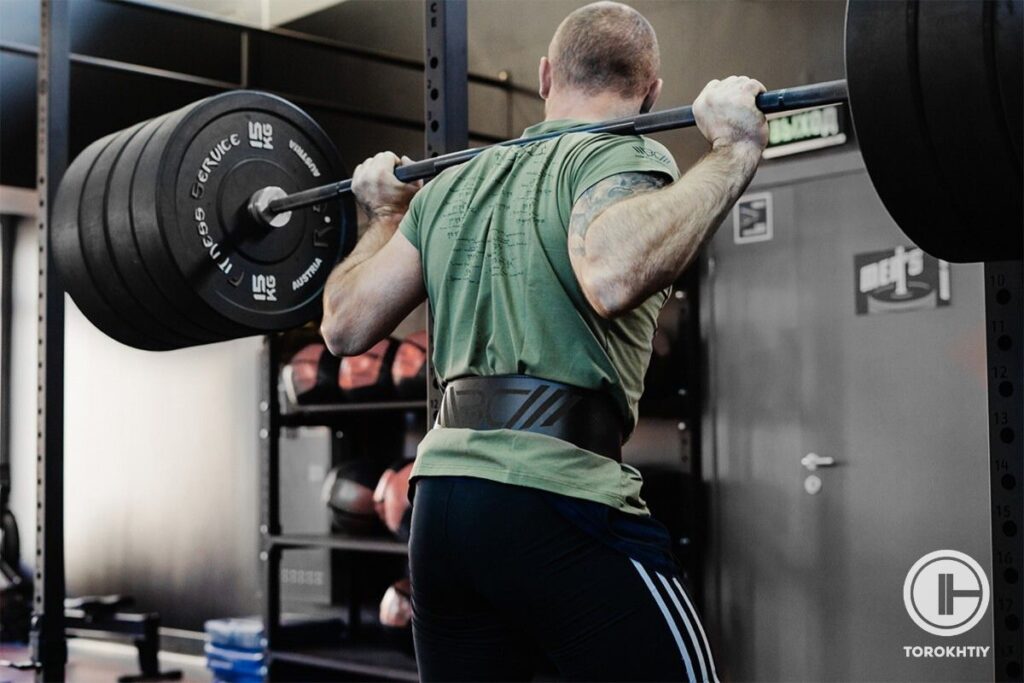
Squat Program Example
There are a lot of squat programs variations, depending on the BIG goal: Basic leg strength, hypertrophy, leg strength for athletic performance, for Olympic weightlifting or powerlifting competitions. Each of these goals will influence the amount of load and its structure.
How to read Olympic weightlifting training plan load
In Olympic weightlifting and strength training there is a standard form of writing planned load. Coach give a prescribtion that athletes need to do on the each training in specific way.
Let’s take a look at the most common program with 3 sessions per week where we need to combine hypertrophy and strength development.
Let`s talke a look on certain example:
It means that in this specific exercise – Back Squat, athlete will do for
1 set for 4 reps on 50%, 3 sets for 4 reps on 65%, 1 set for 4 reps on 75%,
% – counts from actual 1 RM, means that if your current 1 RM 100 kg (220 lbs), athlete work 1 set for 4 reps on 50% – 50 kg (110 lbs), 3 sets for 4 reps on 65% – 65 kg (143 lbs), 1 set for 4 reps on 75% – 75 kg (165 lbs)
Here is a template:
Session 1
- Special Warm-up (2 rounds)
- Bodyweight Split WALK (8+8 reps)
- Gakk SQUAT (8 reps)
- Good Morning (8 reps)
- Muscle SNATCH narrow grip (3 sets / 8 reps)
- Back SQUAT (50% 1 set / 4 reps; 60% 1 sets / 8 reps; 70% 1 sets / 4 reps; 60% 1 sets / 8 reps; 70% 1 sets / 4 reps; 60% 1 sets / 8 reps)
- Split SQUAT (3 sets / 6+6 reps)
- Long JUMP (3 sets / 6 reps)
Session 2
- Special Warm-up (2 rounds)
- Bodyweight Squat JUMP 6 reps
- Elbows ROTATION 8 reps
- Front SQUAT with straps 6 reps
- THRUSTER (3 sets / 8 reps)
- Front SQUAT (50% 1 set / 4 reps; 75% 1 set / 4 reps; 85% 4 sets / 4 reps)
- Deficit Romanian DEADLIFT + SHRUGS (3 sets / 6+6 reps)
- Bodyweight Side SQUAT (3 sets / 12 reps)
Session 3
- Special Warm-up (2 rounds)
- Bodyweight Duck WALK (10 reps)
- Good Morning + SQUAT (8 reps)
- Core ROTATION (20 reps)
- Muscle Tall SNATCH + OHS (3 sets / 5+5 reps)
- Back SQUAT narrow feet (50% 1 set / 4 reps; 65% 4 sets / 4 reps)
- Back SQUAT wide feet (50% 1 set / 6 reps; 70% 2 sets / 6 reps)
- Long JUMP (3 sets / 6 reps)
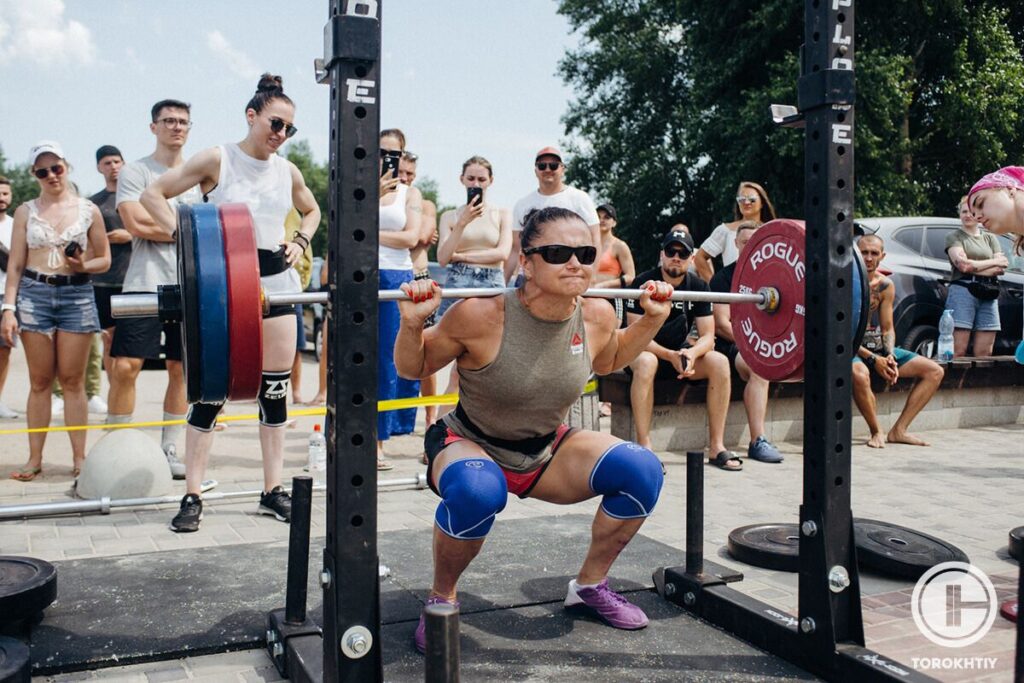
Common Squat Programming Mistakes
Effective programme design is essential to ensuring that athletes not only maximize their performance on competition day but also make constant improvement over time, avoiding plateaus, and steadily increasing the weight on the barbell.
Let’s look at a few key areas where athletes make mistakes in their training and how to start training in a more effective way to maximize long-term strength gains.
1. Ignoring Hypertrophy
Gaining strength can be accomplished by neural adaptations, such as improving motor unit recruitment and intermuscular coordination. Simply put, more regular practice of the squats will result in significant strength improvements.
These neural adaptations to strength training, though, wear off after a while, and in order to continue making strength gains, one must make muscle hypertrophy a focus of their training. Athletes must gradually and steadily increase their overall effort in order to induce hypertrophy.
Given how effectively the body responds to stimulation, an athlete must constantly increase this stress to continue improving. In other words, ongoing hypertrophy won’t happen if you’re not pushing the limits of your training volume, which means you won’t keep giving the body additional opportunity to develop strength.
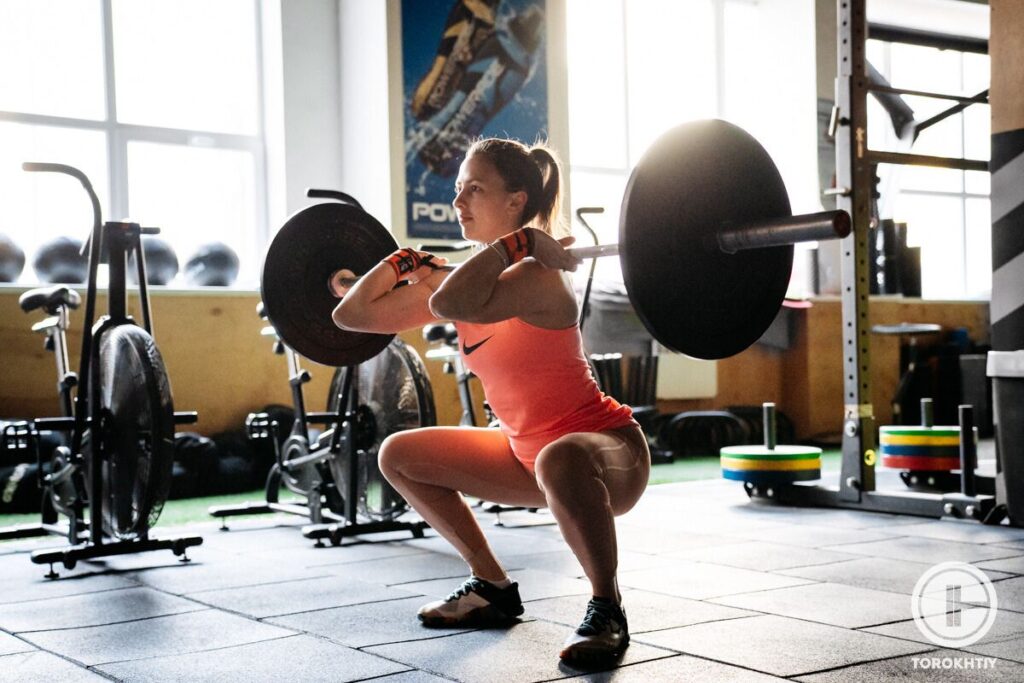
2. Not Enough Exercise Variation
Exercise variety in strength training will often take the form of increasing overall strength. The primary objective of building overall strength must always be to enhance sport-specific movements, in this example the squat, bench, and deadlift.
This keeps the athlete from breaking the rules of specificity and guarantees that the training plan has a defined goal of improving competitive lifts. This is when assistance training starts to play a significant role in a program. Assistance work is frequently described as activities used to increase movement power.
For instance, pause squats can help you develop a lot of static and supporting strength in the hole by preventing the stretch reflex and assisting in maintaining tightness if you regularly miss your squat at the bottom of the lift.
Individual variances have a role in this. There are many excellent help movements available; it is up to the lifter or their coach to identify their weak areas and apply the appropriate assistance exercises.
3. Insufficient Frequency
Numerous research studies have looked into how training frequency affects improvements in strength and muscle mass. It was shown that athletes who spread out their training across six sessions gained greater muscle mass and strength than those who just spread it over three.
Higher frequency programmes seem to induce stronger and more hypertrophic adaptations when volume is taken into account. Theoretically, this results from more frequent peaks in protein synthesis, which promotes greater muscular development.
A bigger muscle has the capacity to generate more force, as we’ve just explained. Additionally, exercising more frequently enables an athlete to practice actions that are particular to competitions, which will enhance neuromuscular adaptations and encourage more strength increases.
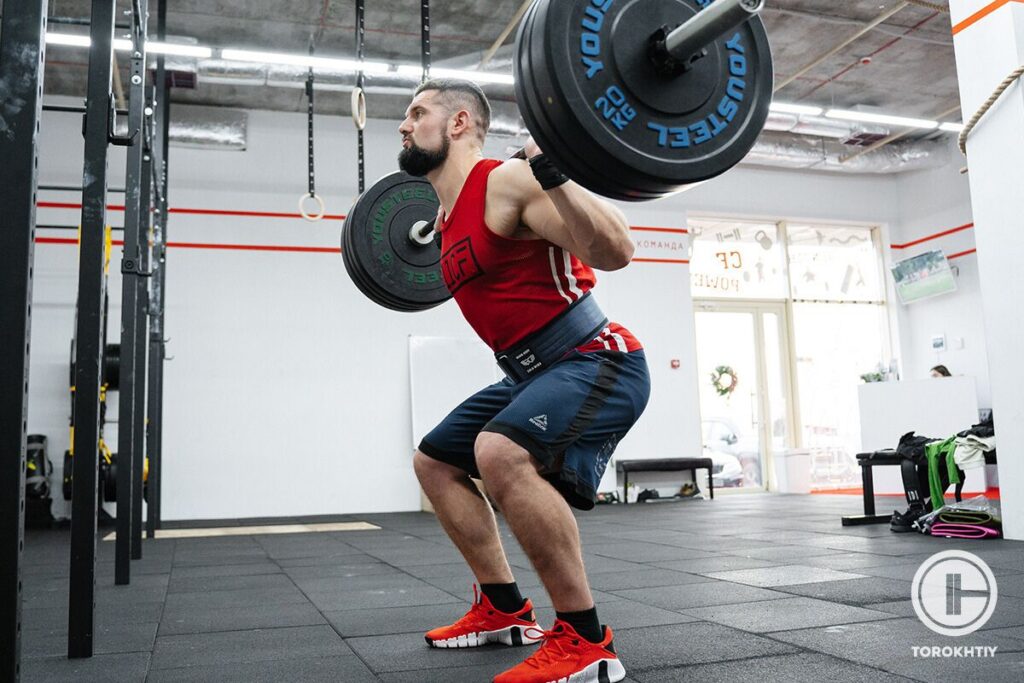
4. Forgetting About Recovery
It’s simple to overlook the physical stresses and obligations that lifters face. Many athletes are already overworked and depleted from skill practice, conditioning speed training, power & strength training, and the demands of school or daily life.
Even the elite athletes frequently struggle with this problem since coaches and trainers constantly pressure the athletes to work at higher volumes and intensities.
When it comes to enhancing performance, getting enough rest and recovering and understanding when to reduce the intensity are essential, and they are frequently identified as qualities of outstanding coaches.
5. Missing Out On The Smaller Muscles
Crushing big muscles while ignoring smaller muscles and stabilizers is a common situation among strength & conditioning coaches. Since the hips are essential to all sports, for instance, the majority of strength trainers now recognise the value of hip training.
Unfortunately, the majority of them do not focus on foot and ankle mechanics, which severely undercuts the outcomes they are attempting to achieve in terms of power and hip function. The shoulder area and the spinal stabilizers both have similar problems.
No matter how powerful the larger muscle groups are, there is a high possibility that force transmission will be compromised if any of these smaller regions are weak or undertrained.
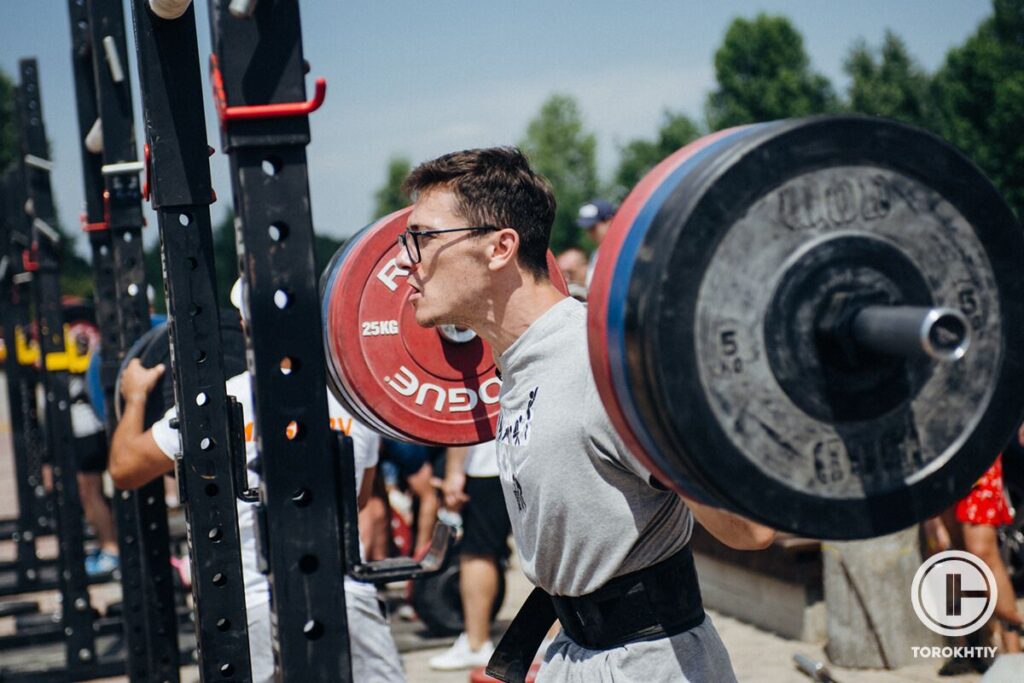
Equipment You May Need For Squatting At Home
1. Lifting Shoes
You should use weightlifting shoes since they will enable you to squat down further. What are shoes for weightlifting? Weightlifting footwear is a supportive piece of lifting equipment made to help and enhance lifting performance.
Squats, the Olympic snatch and clean & jerk and other lower body drills where a foot wedge is wanted will often be performed with weightlifting shoes. They make it more comfortable and balanced, especially if you have limited ankle mobility. This problem is very common among beginner and intermediate athletes.
2. Belt
There are two primary uses for the weightlifting belt. When lifting while standing up straight, it relieves pressure on the muscles of your lower back and avoids back hyperextension when doing overhead variations of the presses and jerks.
A belt reduces lower back stress on extreme weights. But a belt is not required, in my opinion, during all sessions. To keep your muscles in good tone, I advise wearing a lifting belt at a percentage of your body weight or greater, even if you currently use one.
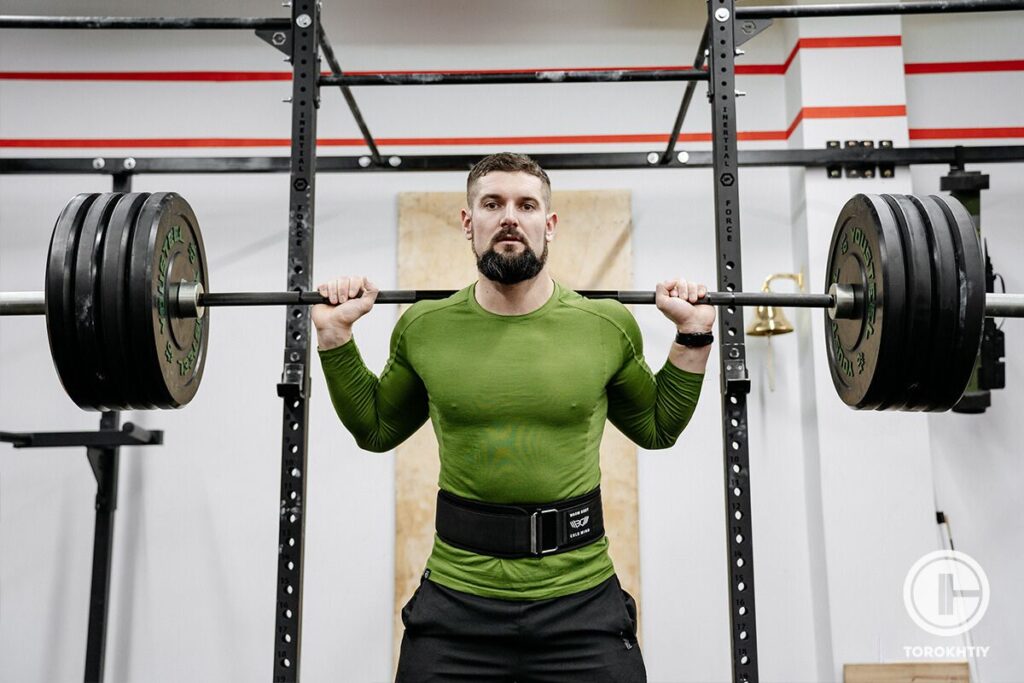
3. Knee Sleeves
Knee sleeves are knee wraps made from neoprene that slip up your lower thighs to compress your knees and the muscles around them. Their normal lengths are 20 to 30 mm, and their typical thicknesses fall between three and seven mm.
Sleeves might not be able to instantly increase your squat maximum by 20 kg, but that doesn’t imply they aren’t at all beneficial. Neoprene sleeves don’t appear to affect squat leaps, machine leg extensions, and leg press, but they do appear to slightly enhance squat one-rep maxes.
The perception of knee stability may be improved by wearing knee sleeves. When lifters are developing bar confidence under larger and larger loads, this could be important. The security of knee sleeves may make you feel a little more stable if you’ve ever attempted to squat heavily and felt unsteady as soon as you unrack.
Your proprioception, or correct knowledge of the body in space, may be enhanced with knee sleeves. It can be possible for you to feel more confident in the hole if you are more conscious of how your body is moving. You could also learn how to remind yourself to stand up while carrying a big weight.
This is crucial for athletes who seek to increase their max squat since better weight lifters can speed up out of a hole and appear to have more squat strength.
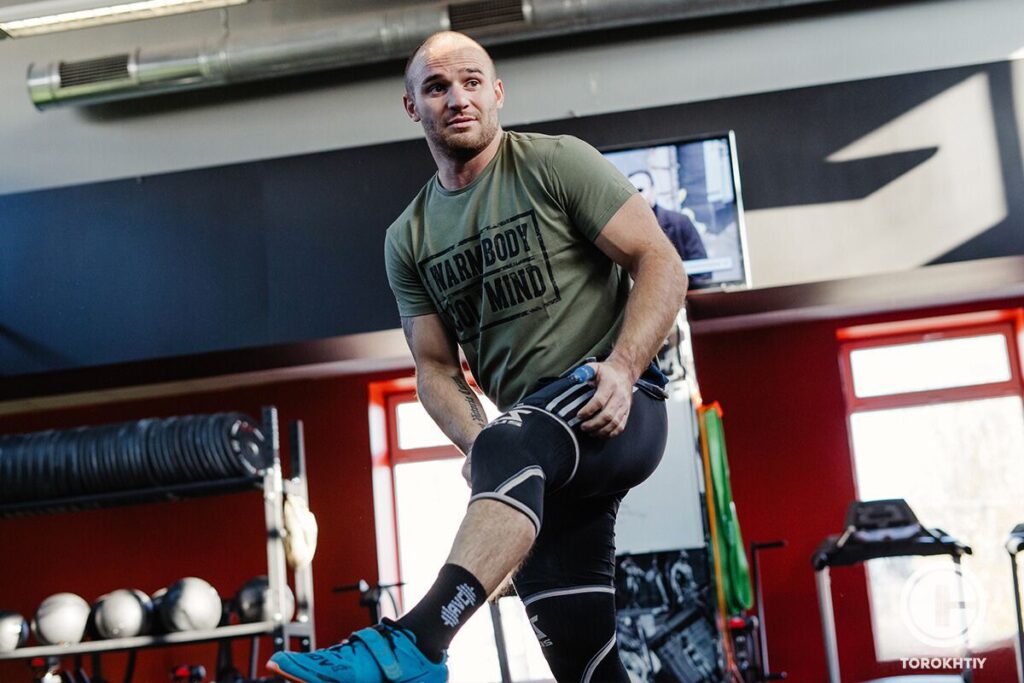
FAQ
How do I get started with a squat program?
Just buy it and download. However you get it, make sure you follow the program faithfully and don’t give up–it takes time to see results from a squat routine. But eventually you’ll see an increase in muscle mass and strength, and a decrease in body fat percentage. Good luck!
What Equipment Is Needed?
- Barbell and Bumper Plates
- Squat Rack
- Collars
- Straps
- Shoulder Activation System
- Plyometric Box (approx. 20-24 Inch)
What Amount of Progress Can I Expect to See With This Program?
You can expect to see significant progress in your squat results by using this program. Squats are a key exercise for overall strength and development, and this program is designed to help you achieve your best squat results. With regular use, you’ll see an increase in strength, muscle size, and endurance. So be sure to stick with the program and give it your all.
How Long Do I Have Access to This Program?
How does lifetime access sound? After enrolling, you have unlimited access to the squat program for as long as you like – across any and all devices you own.
What if I Have More Questions?
Leave us a comment in the section below the article!
Also Read:
- 8-Week Squat Program for Strength
- 4-Week Squat Program
- 6-Week Squat Workout
- 10 Week Squat Program
- 12 Week Squat Program
References:
- Jeremy R Dicus, Samuel H Ellestad, Jesse E Sheaffer, Carol A Weber, Noah C Novak, Michael E Holmstrup “A Comparison of Muscle Recruitment Across Three Straight-Legged, Hinge-Pattern Resistance Training Exercises” Int J Exerc Sci. 2023 Jan 1
- Brad J Schoenfeld, Jozo Grgic, Cody Haun, Takahiro Itagaki, Eric R Helms “Calculating Set-Volume for the Limb Muscles with the Performance of Multi-Joint Exercises: Implications for Resistance Training Prescription” Sports (Basel). 2019 Jul 22
- Vegard M Iversen, Martin Norum, Brad J Schoenfeld, Marius S Fimland “No Time to Lift? Designing Time-Efficient Training Programs for Strength and Hypertrophy: A Narrative Review” Sports Med. 2021 Oct
Why Trust Us?
With over 20 years in Olympic Weightlifting, our team does its best to provide the audience with ultimate support and meet the needs and requirements of advanced athletes and professional lifters, as well as people who strive to open new opportunities and develop their physical capabilities with us.
By trusting the recommendations of our certified experts in coaching, nutrition, dietology, and sports training programming, as well as scientific consultants, and physiotherapists, we provide you with thorough, well-considered, and scientifically proven content. All the information given in the articles concerning workout programming, separate exercises, and athletic performance, in general, is based on verified data. We ensure that you can rely on our professionals’ pieces of advice and recommendations that can be treated as personalized ones which will benefit you and fully meet your needs.
The product testing process is described in more detail here
Author: Sergii Putsov
Head of Sport Science, PhD
Best Results: Snatch – 165 kg,
C&J – 200 kg
Sergii Putsov, Ph.D., is a former professional weightlifter and National team member, achieving multiple medals in the 94 kg weight category at national competitions. With a Master’s degree in “Olympic & Professional Sport Training” and a Sport Science Ph.D. from the International Olympic Academy, Greece, Sergii now leads as the Head of Sport Science. He specializes in designing training programs, writing insightful blog articles, providing live commentary at international weightlifting events, and conducting educational seminars worldwide alongside Olympic weightlifting expert Oleksiy Torokhtiy.
Reviewed by: Oleksiy Torokhtiy
Olympic Weightlifting Champion
Best Results: Snatch – 200 kg,
C&J – 240 kg
Oleksiy Torokhtiy is a professional athlete boasting 20 years of experience in Olympic weightlifting. With multiple European and World titles under his belt, he has showcased his prowess in two Olympic Games (Beijing 2008 and London 2012). Upon concluding his illustrious career, Oleksiy dedicated himself to coaching. By 2022, he had conducted over 200 weightlifting seminars worldwide. He is the visionary behind an international sportswear and accessories brand known for its motto, “Warm Body Cold Mind.” Additionally, he is an esteemed author and the creator of a series of training programs and eBooks.

